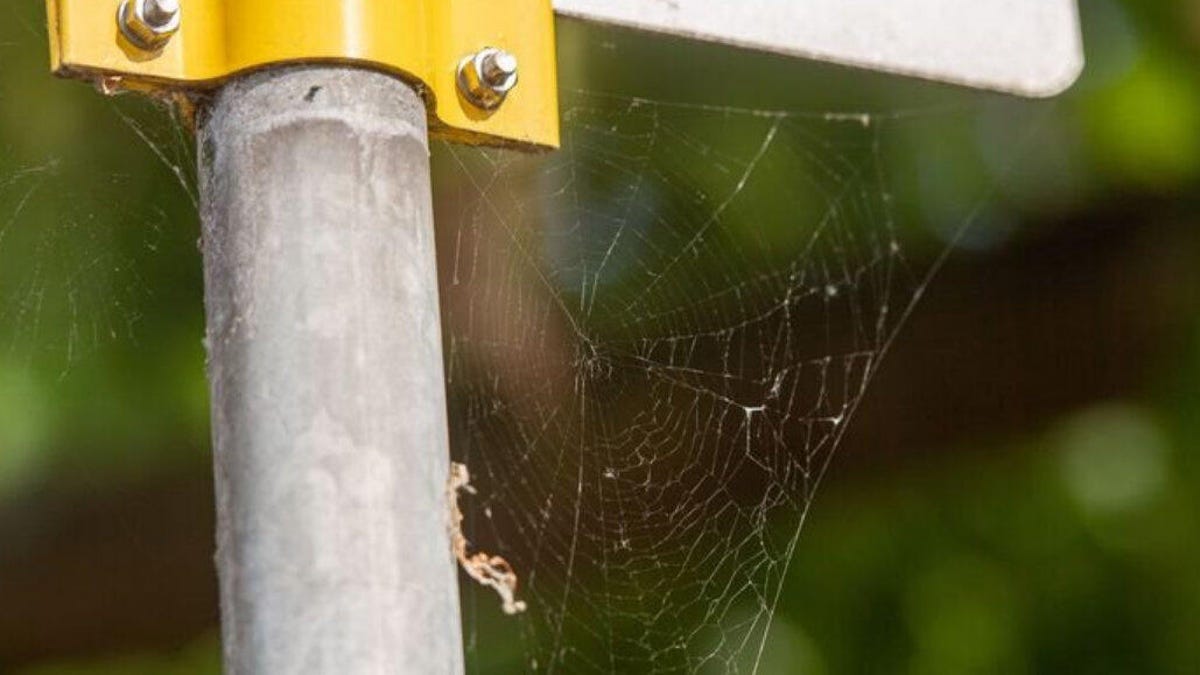Spider Webs Could Help Track Microplastics in the Air We Breathe
A study of bus stop spider webs found all of them had microplastics stuck in the silk.
Microplastics are found at the deepest point in the ocean. They're in the snows of Antarctica. They're on Mount Everest. So of course these tiny particles of plastic waste are also found in the sticky traps of spider webs. That sucks, but a study published online for the August 2022 issue of the journal Science of the Total Environment looked for the first time at how spider webs could be used as a tool for monitoring microplastic pollution in urban air.
Microplastics can come from many sources, including textiles, water bottles, takeout containers and food packaging.
Environmental sciences student Rebecca Süssmuth of the Carl von Ossietzky University of Oldenburg in Germany collected spider webs from bus stops around Oldenburg.
The team put the webs through lab tests to filter out small particles and analyze the composition of what was found. "All the spider webs were contaminated with microplastics," said study co-author Isabel Gossmann in a statement earlier this month. For some of the webs, microplastics made up a tenth of the total weight of the spider's structures.
The researchers included particles from tires under the umbrella of microplastics. They found differing concentrations of tire debris depending on how busy the roads were by the bus stops where the webs were collected.
The results show how spider webs could give researchers a quick overview of microplastics pollution in any given area. It's also a sobering reminder that those particles floating in the air are inhaled by humans. A study earlier this year found microplastics in human blood, though the health risks are still unknown.
It's not just the visible junk like discarded bottles that's a problem. It's also the tiny things we can't see.


